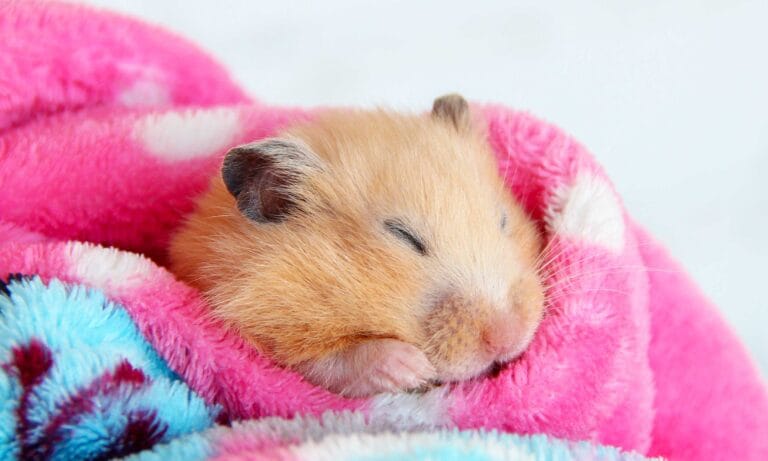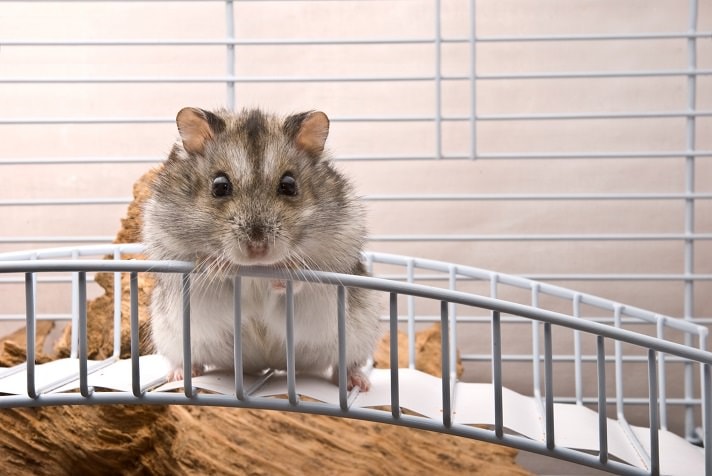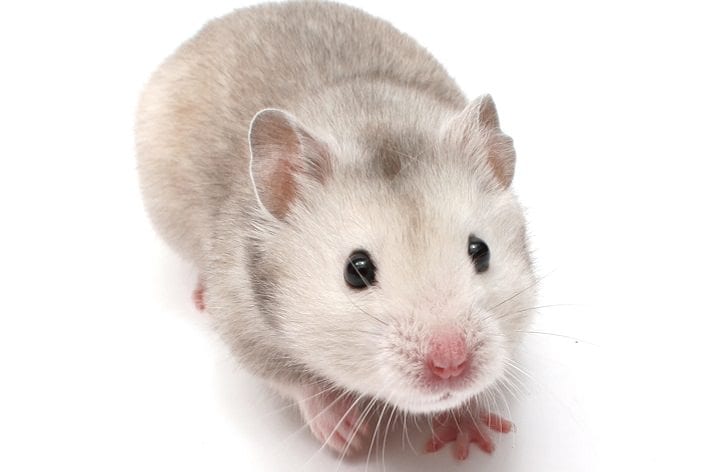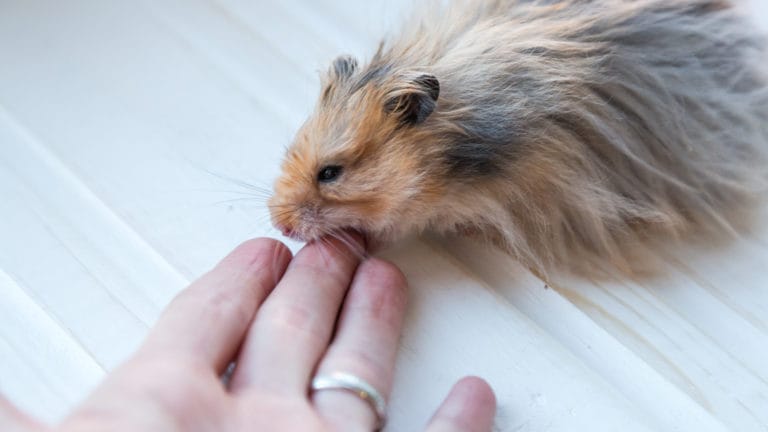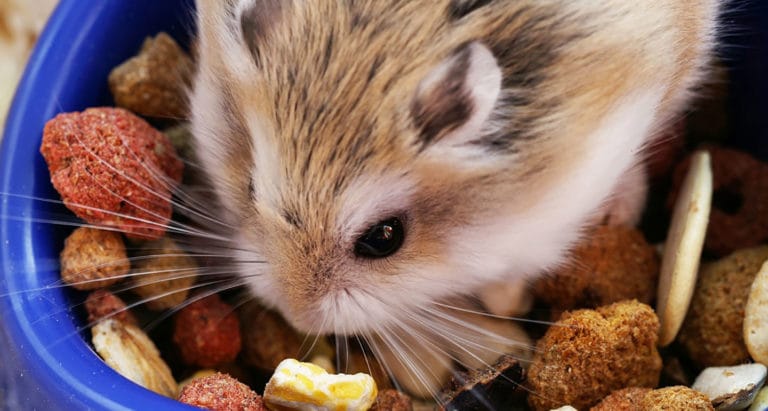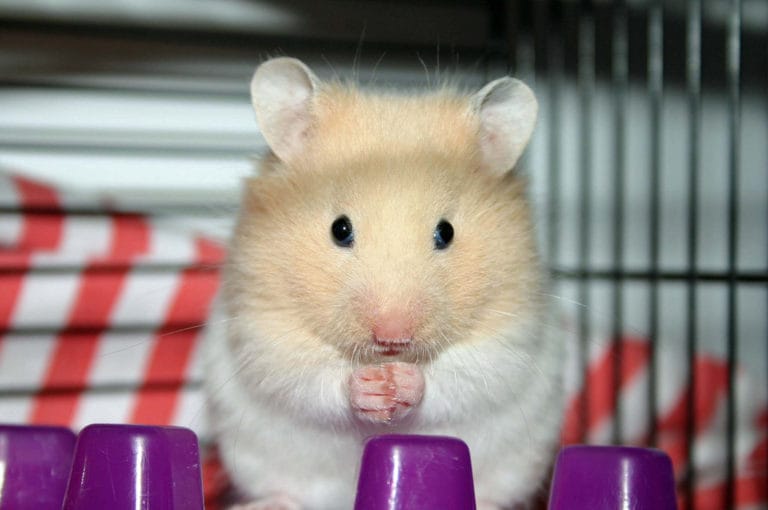Have a pregnant hamster? Not sure what to feed her or the babies? These tips will help guide you to the best hamster diet during these life stages.
What Do Pregnant Or Mother Hamsters Eat?
Mother hamsters need extra protein while they are pregnant or nursing. Feed them boiled egg, bits of cooked unseasoned chicken or beef, mealworms (usually available at high-end pet stores) and fruits or vegetables rich in vitamins A (natural A is good) and E.
Broccoli, sweet apple (as opposed to sour green apple), cantaloupe, and peas are all good fruit and vegetable choices for your hamster.
During pregnancy the restriction on sunflower seeds may be safely lifted; let the hamster eat as much as she can. Pregnant hamsters need the extra folic acid and vitamins as well as the fats and proteins that sunflower seeds provide, which is why mother hamsters can eat more. Protein needs for a hamster increase 60 percent during pregnancy. Nursing 14 to 28 pups in a litter can sap a mother hamster’s reserves; she’ll be able to use the fat in the seeds to keep from losing weight.
Always provide plenty of hamster food for a nursing mother hamster. She’ll need the food both physically and emotionally. Having plenty of resources to draw from makes a mother hamster feel secure and less stressed, which gives the hamster pups the best chance of survival. Hamster babies continue to nurse for almost three weeks after birth.
Feeding Baby Hamsters
Baby hamsters are usually well cared for by their mothers, but you can offer a few foods to help the hamster pups along. Baby hamsters will likely benefit from wheat germ cereal early in their development, so sprinkle a little close to the nest. Also small seeds such as millet are good for hamster pups, even those younger than 10 days old. Place a whole sprig of millet in the cage as an extra treat for the mother. This gives her something interesting to do, because she will need to gather the seeds off the stem.
Sometimes you will need to feed a hamster pup if the mother dies or rejects it. This will be a full-time job. Pups less than 8 days old have a poor survival rate, but you should still try. It can be rewarding to nurse a young hamster to adulthood. Saving a motherless hamster pup involves more than just feeding it, but our focus is nutrition.
Feed a pup evaporated milk mixed in a 50/50 solution with water. Warm the solution to 90 degrees Fahrenheit before feeding it to the baby hamster. Administer the solution via syringe or feeding wick (available at most pet stores). You may also use puppy or kitten formula. The volume to feed varies with the type of hamster.
Feeding Baby Dwarf Hamsters
For a dwarf hamster less than 2 weeks old, start at 2 drops every half-hour around the clock. Increase this to 3 drops every half-hour as it approaches 2 weeks of age. When the hamster pup reaches 2 weeks of age, increase the volume to 1/2 milliliter every hour. While nursing on this formula also provide wheat germ, small seeds and something fresh such as broccoli.
Hamsters continue to nurse for up to 3 weeks in extreme cases. This doesn’t mean that the hamsters won’t eat solid foods. Hamster pups start using their teeth at about 5 days old on smaller seeds. If you provide wheat germ by sprinkling it close to the nest, small hamster pups will lick at it.
During the third week you should see hamster pups eating from the bowl of solid foods. You can breathe easy after three weeks and start weaning them from the milk. To wean a hamster, just reduce the amount of milk given by half for a day or two and then stop all milk by the next day.
Feeding Baby Syrian Hamsters
For a Syrian hamster or other full-sized species of hamster, increase the amount of milk offered. Start with 1 milliliter 12 times a day around the clock until the hamster pups are 2 weeks old. After 2 weeks, feed them 2 milliliters 8 times a day. Provide the hamster pups with wheat germ, small seeds and something fresh while feeding the formula.
Around 3 weeks of age, you should see the hamster pups start to eat solid food. When you see this, gradually wean them off the formula. If you watch hamster pups carefully you’ll notice that they eat droppings from adult hamsters. This is normal and quite necessary. The droppings contain bacteria that the hamster pups need to help them break down and digest the mostly cellulose foods they eat. This is true for orphan hamsters as well. If you are a surrogate parent, remember to place droppings from an adult hamster near the nest so the pups you are nursing can benefit.
By: Doran Jones
Excerpt from the Popular Critters Series magabook Hamsters with permission from its publisher, BowTie magazines, a division of BowTie Inc.
Share:

